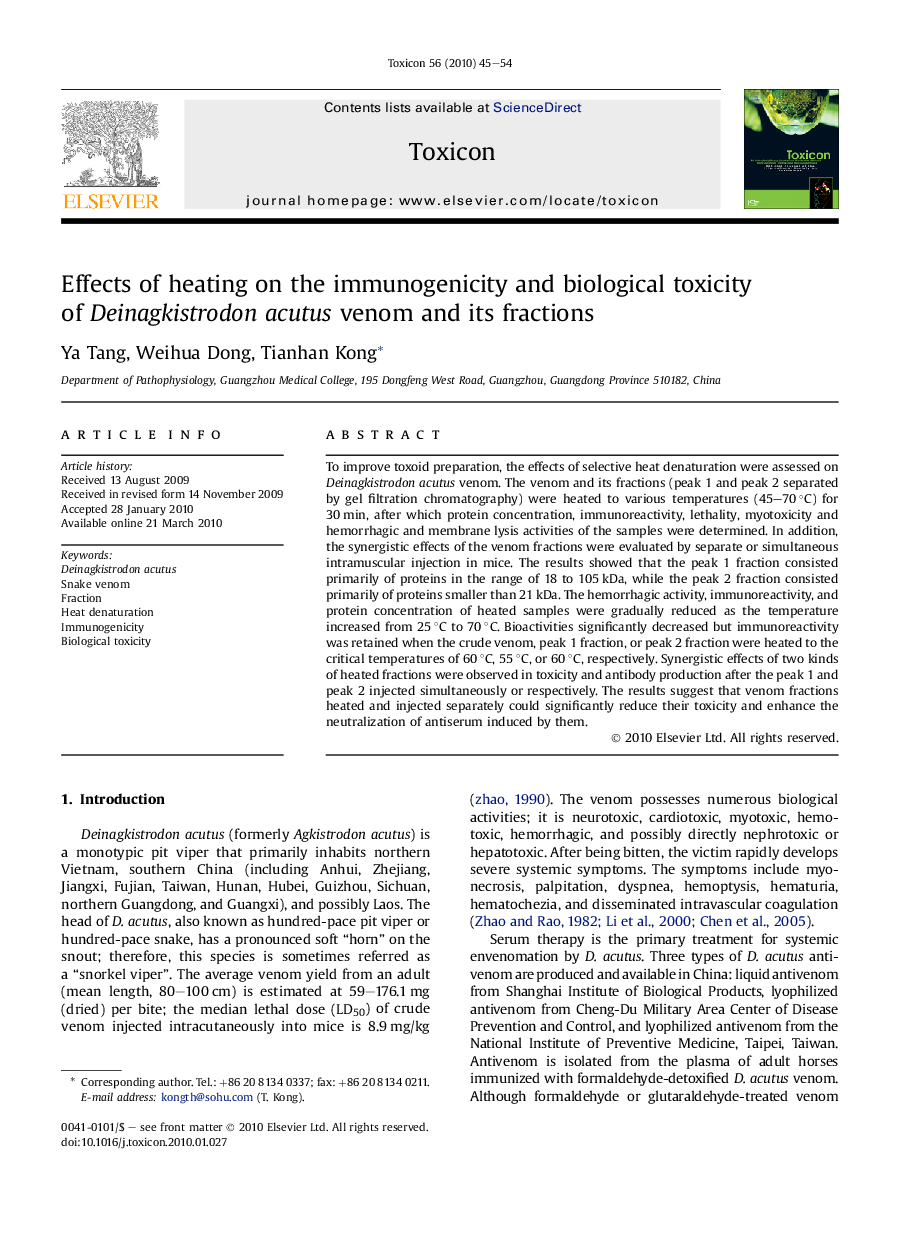| Article ID | Journal | Published Year | Pages | File Type |
|---|---|---|---|---|
| 2066379 | Toxicon | 2010 | 10 Pages |
To improve toxoid preparation, the effects of selective heat denaturation were assessed on Deinagkistrodon acutus venom. The venom and its fractions (peak 1 and peak 2 separated by gel filtration chromatography) were heated to various temperatures (45–70 °C) for 30 min, after which protein concentration, immunoreactivity, lethality, myotoxicity and hemorrhagic and membrane lysis activities of the samples were determined. In addition, the synergistic effects of the venom fractions were evaluated by separate or simultaneous intramuscular injection in mice. The results showed that the peak 1 fraction consisted primarily of proteins in the range of 18 to 105 kDa, while the peak 2 fraction consisted primarily of proteins smaller than 21 kDa. The hemorrhagic activity, immunoreactivity, and protein concentration of heated samples were gradually reduced as the temperature increased from 25 °C to 70 °C. Bioactivities significantly decreased but immunoreactivity was retained when the crude venom, peak 1 fraction, or peak 2 fraction were heated to the critical temperatures of 60 °C, 55 °C, or 60 °C, respectively. Synergistic effects of two kinds of heated fractions were observed in toxicity and antibody production after the peak 1 and peak 2 injected simultaneously or respectively. The results suggest that venom fractions heated and injected separately could significantly reduce their toxicity and enhance the neutralization of antiserum induced by them.
